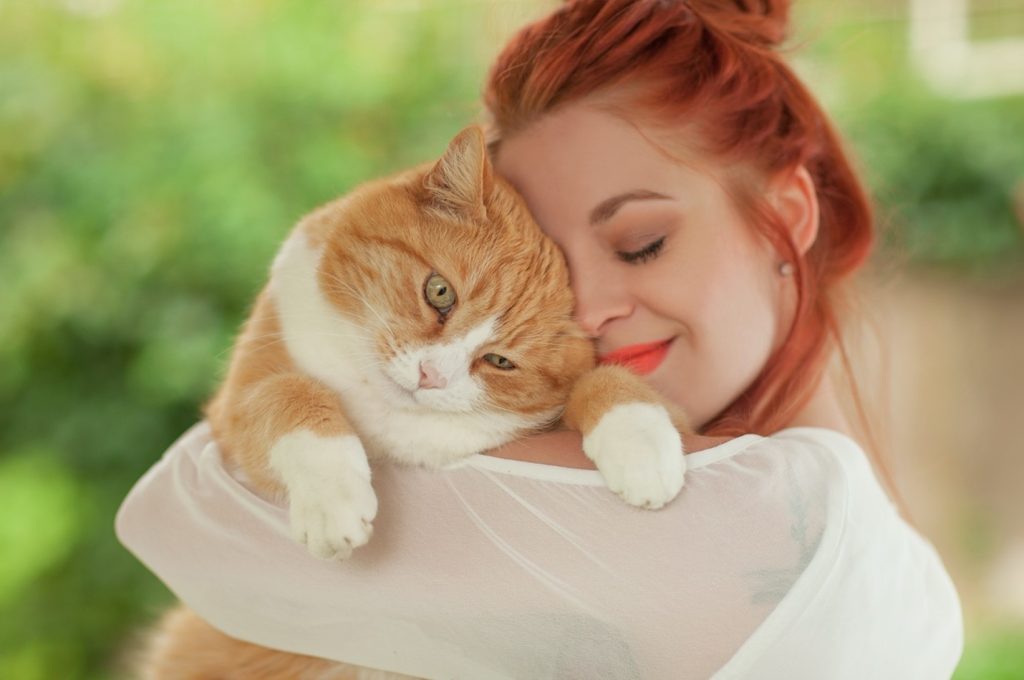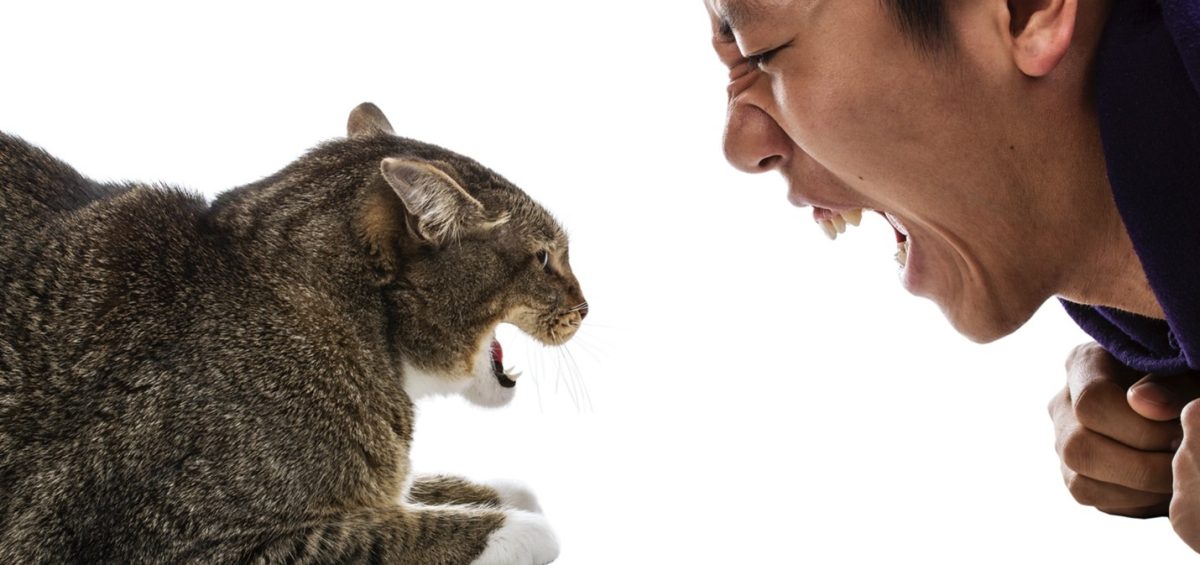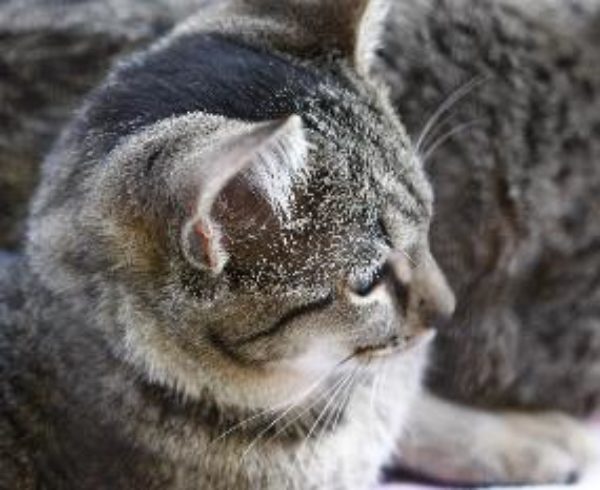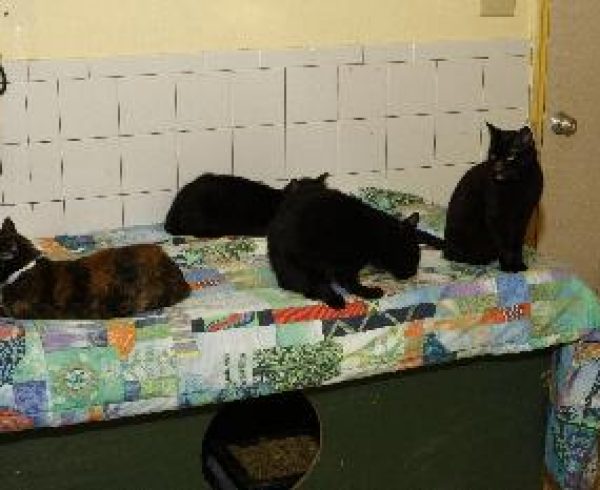One of the most frustrating issues I think I’ve ever faced as a cat mom was Isabel peeing outside the litter box. First, there’s the impossible task of trying to get the smell out and there’s the staining of fabrics and furniture. She even peed once on my sleeping 15-year-old daughter! That wasn’t the best bonding moment for their relationship. 🙄
I know I’m not alone, as it’s reported that 10% of all cats will do this at some point in their lives. I wish I knew then what I know now, and didn’t struggle for years trying all kinds of solutions to fix the problem.
Nothing worked for long and both Isabel and I got frustrated, the anxiety levels increased and I even felt anger about the situation. I knew it wasn’t her fault; cats don’t exhibit inappropriate urination to spite us. But, she definitely felt that energy in the house and I know that didn’t help. Chronic stress has its own impact on the health and wellbeing of our pets.
I’ve learned a lot about animal behavior and natural wellness. Peeing outside the litter box is a call for help. I want to break down why that could be, and give you a solution that is having a lot of success in fixing the problem, so you can finally have the relief you seek and deserve (after living with this issue for so long!). You and your kitty kat will be much happier for it.
Let’s first distinguish what exactly is happening in your house.
Cats Spraying vs Cat Peeing Everywhere Except The Box

Some cat parents will experience their cats spraying. This is when a cat backs up to an object, usually does a little back leg dance to get poised, and then shoots a spray of urine onto the object. This is very different from finding a puddle of cat urine on the floor or your couch, bed, wherever.
The main difference is cats spraying is a territorial thing; they are marking their territory. In these cases, it would be good to create a clear area for them they know is theirs. If there are multiple cats in the household, separating them might put an end quickly to this problem.
Cats peeing everywhere is less straightforward. There are multiple possible causes. Let’s look at them.
Possible Causes for Cats Peeing Outside The Box
The first thing you’ll want to look into is whether the problem is medical. Does your cat have some illness or condition that is causing them to pee everywhere but the box?
Always check their B.E.A.M. (Behavior. Energy. Appetite. Mood). Are they normal for him or her? If not, do they resolve in a day or two? If not, chances are you have a medical condition and should have them checked by your vet, just to be sure.
Medical Conditions To Consider
-
Stones in the bladder (cystic calculi) and/or crystal formation in the urine – this is often caused by diet. Dry foods are very dehydrating and can be a leading culprit in the formation of crystals. Once formed, crystals can lead to the next possible cause. ⬇️
-
Urinary Tract Infection (UTI’s) – this develops when bacteria enters into and begins multiplying in the bladder and urethra and comes out in the urine. Crystal formation can precede this. Symptoms are frequent urination, even though only a small amount may come out; straining to urinate; blood in the urine. It can be painful and should be treated asap.
Your vet will put them on antibiotics, which will kill the bad and good bacteria in their gut, the foundation of good health. There are other options like homeopathy that work very well to treat UTI’s, stimulating the body to heal itself. I’ve had many successes with this.
If you choose antibiotics, it is very important to double a good probiotic starting a few days before and then for one week after the course is done to support the gut microbiome balance.
The main objective is, whichever way you choose, don’t wait. UTI infections left untreated can become dangerous.
-
Hyperthyroidism (hyperactive thyroid gland) – this is a condition that occurs more in older cats, but can occur in younger. It is an overproduction of a thyroid hormone that affects metabolism. Symptoms include weight and /muscle mass loss, chronic vomiting, and more vocalization, as well as drinking and urinating more frequently.
-
Arthritis (degenerative joint dis-ease) – if your cat finds it painful to get into the litter box and do their business, they’ll find another place to go. There will be other symptoms you can observe like favoring a limb, limping, difficulty getting up and moving after lying down. Having a box they don’t have to jump into, that’s low enough and large enough to make it as easy as possible to get into and use may solve the problem easily.
-
Kidney Dis-ease – this usually affects older cats and can be a result of years of poor diet, vaccines, medications that suppress conditions. Symptoms include increased thirst and urination, decreased appetites or becoming a fussy eater, vomiting, and weight loss.
-
Feline Idiopathic cystitis (FIC) – this is more an emotional disorder caused by stress or a change in the environment, possibly a move or moving the litter box.
Emotional or Environmental Conditions
I tell my students and clients this often, and I really can’t say it enough. To be a really good pet parent, you have to develop your detective skills and be very observant when it comes to your cat or dog’s behavior. This definitely comes into play if your cat is peeing outside the litter box and the root cause is emotional. Here are some questions you could ask yourself:
-
What is your home environment like? Is it stressful? Is it a multi-cat household where the cats don’t get along?
-
What type of litter box are you using? Is it easy or difficult to get in and out of? Plenty of space to do their business, which includes turning and covering up.
-
Do you have enough litter boxes? The rule of thumb is one more than the number of cats in the household, so with one cat, two boxes, etc.
-
What type of litter are you using? Did you change litters recently and the problem started just after? Does the litter have a scent? Is it easy or difficult on the feet/paw pads?
-
How often are you cleaning out the box? Once a day? Once every few days? Cats are very clean animals and prefer to go in a clean box. Cleaning at least once a day and washing the entire box and putting in fresh litter once a week is recommended.
-
When did the problem begin and were there any changes at all with you, the diet, home environment, anything just prior to the onset?
-
Were any new pets added to the household?
-
Is there any pattern as to the time of day the incidents happen or particular days of the week or, seasons, even?
-
Is there a pattern to the types of surfaces the cat is choosing to pee on? Location, smooth vs rough, flat vs vertical.
-
What is the personality of this cat? And, how do they get along with the other animals in the home and the people?
After evaluating all of the above and making any changes that could be the culprit, if the problem still exists, there is a simple solution that’s been very effective.
The Solution
There is a proprietary product I came across having tremendous success in solving the problem of cats peeing outside the box. Cat Spraying No More™ is a digital program written by SPCA Veterinary Technician, Sarah Richards, that will teach you exactly how to stop your cat from peeing outside the litter box – permanently.
Cat parents tend to focus on the issue of the urinating outside the box, rather than on why the behavior is occurring – the key element to Cat Spraying No More.
It’s a system Richards and a cat behavior specialist created and The Cat Spraying No More System carefully outlines various scenarios of unwanted spraying and peeing outside the box, and targets possible causes in an easy to understand and well-laid out format. Cat parents can follow this system, based on your specific situation, so your results are targeted more to your cat.
Wouldn’t it be such a relief to
-
Save vet money and time.
-
Not deal with more carpet cleaning, upholstery shampooing and time wasted finding these incidents and attending to them.
-
Probably most important, letting go of the stress, anxiety and frustration a chronic situation like this creates
Some of the things this program includes are:
-
Tricks you can use to get your cat to “like” its litter box again. This system helps you direct your cat back to using the litter box, on its own, without force.
-
A home free of stress and smell. Once you see how easy it is to get your cat back on track with this system, your home will be cleaner, you’ll be less stressed, and everyone will be happier.
-
Helpful hints to effectively clean up the misfires. The system provides detailed instructions on clever concoctions that will effectively and permanently clean accident areas, so you never know they existed.
-
Four bonus guides to boost your knowledge of caring for your cat:
-
-
Cat Training Bible
-
101 Recipes for a Healthy Cat
-
The Cat Care Blueprint
-
Pet Medical Recorder Software
-
It’s also very affordable, which I like! Nothing in this system is overly expensive or difficult to execute. It also comes with a 60-day money back guarantee.
Things To Consider
-
This system is not a perfect solution for 100% of cases (of cat behaviors that don’t work for you). While the system is effective in 95% of the cases, there are instances in which the system does not work.
-
Results may differ. As long as the system is used as instructed results are generally achieved very fast, however if the system is not followed properly, little to no results are experienced.
What’s interesting to note is, a cat’s stress organ is their urinary tract, meaning when things stress a cat out, the first place they hold that stress is in the urinary tract. Conversely, for dogs and humans, it is the gastrointestinal tract.
Thus, when cats get stressed, they will often urinate in odd places or more frequently in small amounts, and they can even get blood in their urine in severe cases.
“Anything that changes a cat’s feeling of well-being can create a change in behavior, and in cats, that means litter box habit changes,” says Dr. Cathy Lund of City Kitty, a feline-only veterinary practice in Providence, Rhode Island.
I like to look at even the most challenging situations as opportunities, and this frustrating behavior, too, is an opportunity to learn ways to solve this common and very frustrating problem.
It is also an opportunity for you, cat mom or dad, to learn how to communicate with them more deeply. Your kitty is trying to tell you something; looking for ways to understand them is a tool to have in your kit (no pun intended) that can go a long way towards avoiding or easily correcting unwanted behaviors.


















